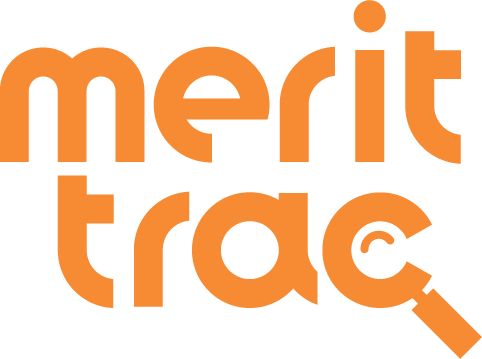
It’s Time to Rethink, Reimagine, Reinvent Behavioral Assessments
Date: 17/07/2024 | Category: General
Behavioral assessments have undergone significant transformation through centuries of research, evolving from niche tools into a scalable science essential for modern organizational needs. With 92% of employers recognizing the efficacy of skills-based hiring in identifying talented candidates, it's clear that the landscape of talent acquisition is shifting. Historically reserved for executive hiring, behavioral assessments are now democratized, providing valuable insights across all organizational levels. This shift is largely driven by technological advancements, which have streamlined the development, delivery, and measurement of these assessments.
As we navigate an era dominated by digital natives, it's imperative for businesses to rethink, reimagine, and reinvent behavioral assessments, ensuring they are aligned with contemporary workforce dynamics and technological capabilities.
The Role of Technology in Behavioral Assessments
Technological advancements have revolutionized the field of behavioral assessments, enhancing how we measure, analyze, and interpret behavior. Here’s a closer look at some key technologies and their potential:
-
Automated Data Collection and Analysis
Wearable devices like smartwatches and fitness trackers collect continuous, real-time data on physical activity, heart rate, and other physiological markers. These data points can be analyzed to infer behavioral patterns and trends. Mobile applications also track user behavior, engagement, and responses, providing a wealth of data for comprehensive analysis. These technologies streamline data collection, making it more accurate and less intrusive.
-
AI and Machine Learning
AI algorithms excel at identifying patterns and correlations in large datasets, revealing behavioral trends and anomalies that might be missed through manual analysis. Machine learning models can predict future behaviors based on historical data, enabling proactive interventions and more accurate assessments. These technologies enhance the precision and efficiency of behavioral assessments, offering deeper insights into complex behavioral dynamics.
-
Digital Platforms for Remote Assessments
Virtual Reality (VR) environments can simulate real-life scenarios, providing immersive settings for behavioral assessments. These controlled yet dynamic environments allow for detailed observation and evaluation of behavior in contexts that closely mimic real-world situations. This technology expands the scope of assessments, making them more engaging and contextually relevant.
-
Natural Language Processing (NLP)
NLP can analyze written or spoken communication to gauge sentiment, emotional state, and engagement levels. This technology helps in understanding the nuances of human emotions and responses, enriching the behavioral data collected. Automated chatbots can conduct preliminary assessments, interact with users, and gather data on their responses and behavior. This not only enhances efficiency but also provides an engaging and interactive assessment experience.
-
Video and Audio Analysis
Advanced algorithms can analyze facial expressions and micro-expressions to assess emotions and reactions. Additionally, voice analysis- examining tone, pitch, and pace, can infer stress levels, confidence, and other behavioral traits. These technologies offer a deeper understanding of non-verbal cues, which are critical in comprehensive behavioral assessments.
-
Gamification
Interactive behavioral games designed to elicit specific behaviors can provide valuable data on decision-making, problem-solving, and social interactions. Gamified elements in assessments increase engagement and provide additional data points for analysis. This approach makes assessments more engaging and less intimidating for participants.
-
Enhanced Reporting and Visualization
Interactive dashboards visualize data in an easily interpretable format, helping assessors quickly identify key insights. These tools facilitate more informed decision-making based on comprehensive and clear data presentations. Automated customized report generation tailored to specific assessment goals and stakeholder requirements enhances the utility and relevance of the assessment data.
Hiring Advantages You Can Gain With Behavioral Assessments
Behavioral assessments offer several noteworthy advantages in the hiring process. It includes:
- Determine cultural fit:
Behavioral assessments help identify candidates who align with the organization's culture, ensuring a better fit and higher job satisfaction.
- Predict future success:
By evaluating how candidates react in simulated work scenarios, these assessments provide insights into their potential performance and success in the role.
- Decrease time to hire:
Automated and standardized behavioral assessments streamline the hiring process, reducing the time needed to evaluate candidates.
- Find candidates who excel under pressure:
These assessments can reveal how candidates handle stress and pressure, identifying those who can thrive in challenging environments.
- Enhance objectivity in hiring:
Behavioral assessments provide objective data that reduce biases in the hiring process, leading to fairer and more equitable hiring decisions.
The Future of Behavioral Assessments
As technology continues to evolve, the expectations of organizations and candidates are also shifting. The integration of advanced technologies such as AI, IoT, and wearables holds significant potential to transform behavioral assessments, enhancing their accuracy, efficiency, and depth of insight. However, it is crucial to prioritize the privacy and interests of those being assessed. Maintaining the integrity of assessment science is vital to prevent data manipulation, which can misrepresent candidates true profiles. Ethical considerations and data privacy must be the cornerstone of these technological advancements.
By effectively leveraging the advanced suite of personality and behavioral assessment tests of MeritTrac, businesses can ensure the selection of the most suitable candidates and the development of their employees. This strategic approach not only boosts organizational performance but also cultivates a culture of continuous improvement and innovation.
Conclusion
The future of behavioral assessments lies in our ability to rethink, reimagine, and reinvent these tools through the lens of technological innovation while upholding the highest ethical standards. Integration of advanced technologies can develop assessments that are not only more accurate and efficient but also provide deeper insights into human behavior. This transformation promises a more engaging and effective approach for both organizations and individuals. As we embrace this evolution, businesses can look forward to a future where behavioral assessments drive better hiring decisions, enhance employee development, and foster a culture of continuous improvement.












 Sales Hotline: USA: +1 646 916 0939 / Others: +91 80619 14700
Sales Hotline: USA: +1 646 916 0939 / Others: +91 80619 14700


